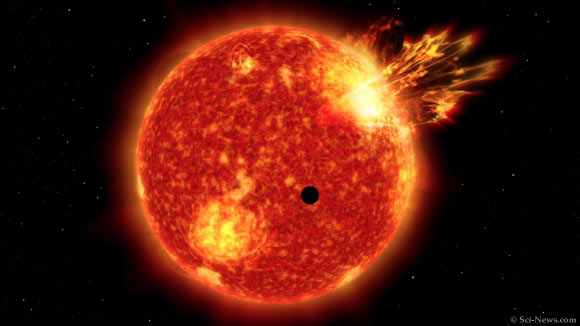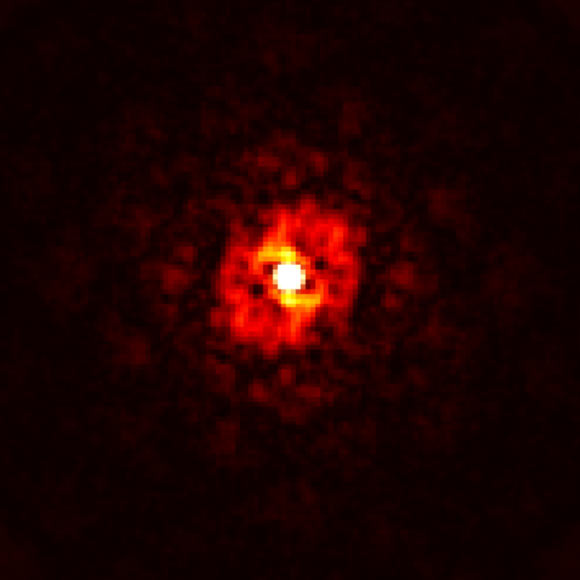TESS Discovers Its First Thick-Disk Exoplanet | Astronomy – Sci-News.com
Astronomers using NASA’s Transiting Exoplanet Survey Satellite (TESS) have spotted an Earth-sized planet orbiting LHS 1815, a star in the thick disk of our Milky Way Galaxy.

An artist’s impression of the Earth-sized exoplanet LHS 1815b and its host star. Image credit: Sci-News.com.
Current theories postulate that the Milky Way Galaxy is made up of several components: a thin disk, a thick disk, a halo and a bulge.
Solar neighborhood stars are mostly members of the Galactic disk, with a small fraction belonging to the halo.
To date, more than 4,000 exoplanets have been detected. However, few of the known exoplanets have been claimed to show thick-disk features.
The difference in planet formation and evolution between the thick and thin disks of the Milky Way is still a mystery.
The newly-discovered exoplanet, named LHS 1815b, is the first thick-disk planet detected by TESS.
“We confirmed the thick-disk nature of LHS 1815 mainly on the basis of its kinematic information,” Tsinghua University astronomer Tianjun Gan and colleagues explained in their paper.
“In general, thick-disk stars are kinematically hotter than stars that belong to the thin disk.”

This image, taken with the 4.1-m Southern Astrophysical Research (SOAR) telescope, shows the M1-type dwarf star LHS 1815. Image credit: Gan et al, doi: 10.3847/1538-3881/ab775a.
LHS 1815 is a bright and quiet M1-type dwarf star located 97.4 light-years away.
Also known as MASS J06042035-5518468, TIC 260004324 and TOI 704, the star is about half the size and half the mass of the Sun.
LHS 1815b orbits the parent star once every 3.2 days at a distance of only 0.04 AU (astronomical units).
The alien world is about 1.1 times bigger than Earth and 4.2 times more massive.
Dr. Gan and co-authors estimate the planet’s temperature to be about 344 degrees Celsius (651 degrees Fahrenheit).
“We validated the planet by combining space and ground-based photometry, spectroscopy, and imaging,” they said.
“Future studies of the interior structure and atmospheric properties of planets in such systems using, for example, the upcoming James Webb Space Telescope (JWST), can investigate the differences in formation efficiency and evolution for planetary systems between different Galactic components (thick and thin disks, and halo).”
A paper on the discovery was published in the Astronomical Journal.
_____
Tianjun Gan et al. 2020. LHS 1815b: The First Thick-disk Planet Detected by TESS. AJ 159, 160; doi: 10.3847/1538-3881/ab775a





